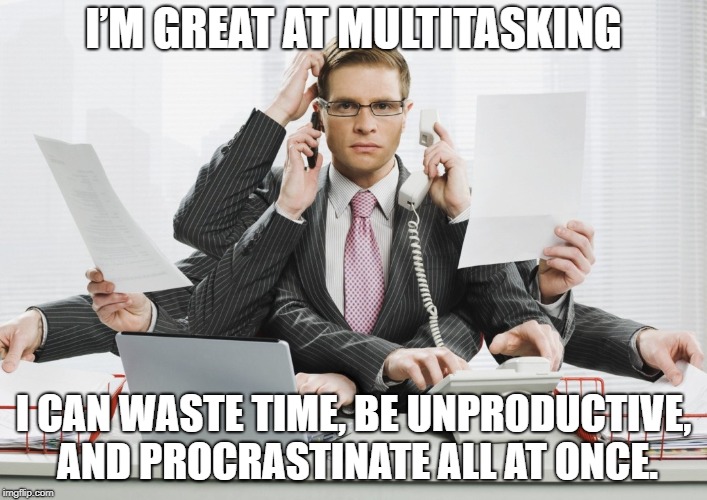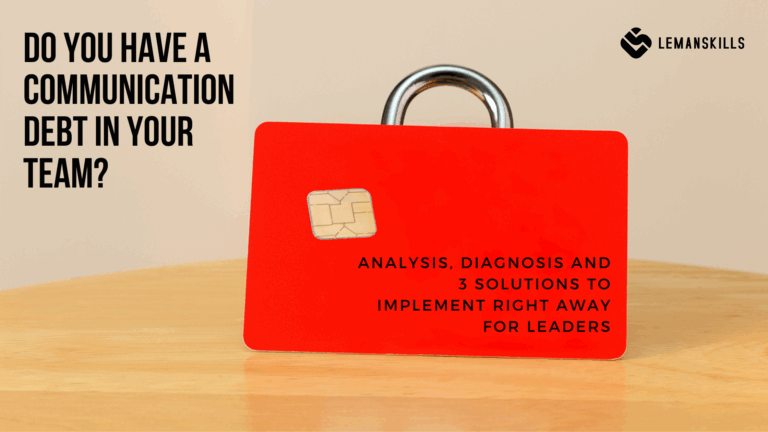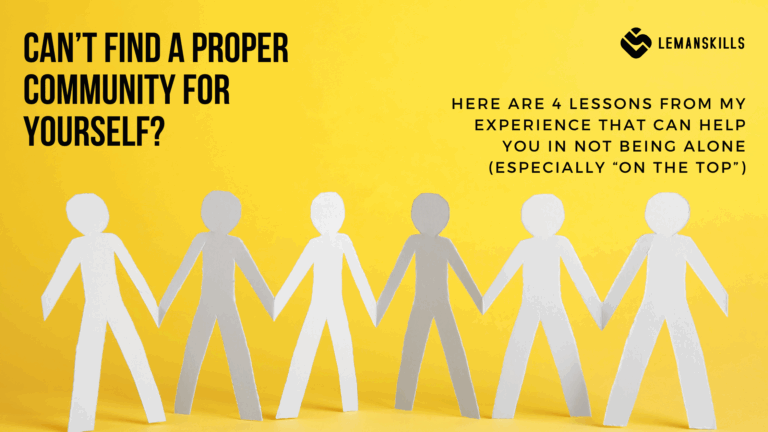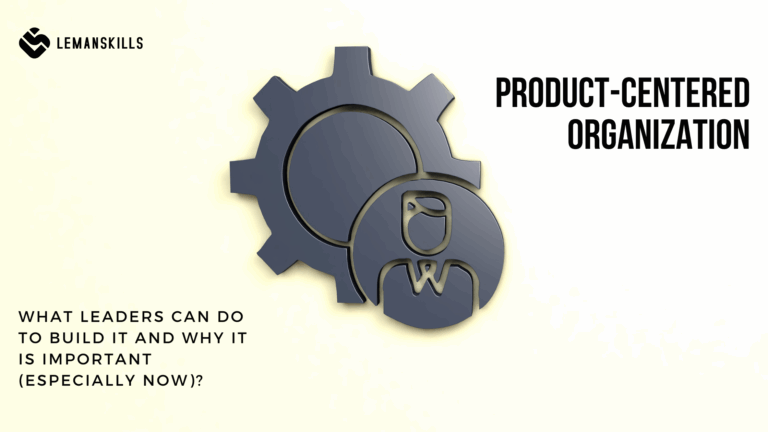Focus. Use your brain, you are not the monkey. You can control yourself while having an urge to use your phone for the 30th time during the last 15 minutes.
We hear it constantly when we want to learn how to be more focused, to not get distracted in this crazy world where literally everything can disturb us. Endless notifications on our phones, Teams/Slack pings, shiny new e-mail icon, phone calls, other people, kids, pets, noises from the street or neighbors’ apartments. As well as our own thoughts, constantly running as they want, making up stories that often aren’t even real.
And on the top of everything there is a constant change, another crisis that we need to deal with, endless task lists and multiple hats that every single one of us wear every day. How to stay sane and focused in that kind of environment?
How to be mindful about what we do in the world of a constant distraction? Let’s find out more about it today.
The myth of multitasking
I remember the times when I was a recruiter, it was around 8 years ago. And I can recall vividly some of the “requirements” sections that I saw all over the internet or that I’ve created myself.
“Multitasking” or “an ability to cover multiple tasks at the same time” was one of the most important skill that hiring managers were looking for. And we were looking for as recruiters in the resumes of our candidates. It was like a superpower: everyone wanted to have it (I remember training offers that were available back then shouting things like: “how to acquire a skill of multitasking”; true story) and everyone wanted to have those skills in their teams.

Multitasking. The key word of an efficient and effective employee. Such a shame that this is something completely pointless and misleading.
The truth is that there’s no such thing as multitasking. We cannot do two or more things at the same time with a proper focus. When you talk with somebody and go through your e-mail inbox, do you remember anything that this person have said to you? Or when you participate in a workshop or a webinar and responding on Teams or Slack at the same time, do you remember what you were supposed to learn during the session?
Exactly. You don’t, because it’s not possible. You cannot multitask, you can at most shift your attention really quickly from one thing to another. But the more you do it, the longer it is to come back fully to where you were a few seconds or minutes ago.
“One Thing” by Gary Keller and Jay Papasan is an amazing book about focusing on one thing at the time. One task, one goal, one person. One skill, one meeting. Do one thing, finish it, then start another one. No distractions, ignoring the notifications, focusing on what you do. It sound like a joke or the easiest thing in the world that even a monkey can do. But is it really that simple?
Try to do it today (or tomorrow, if you read this late in the evening). Do one thing at the time. Turn off the notifications on your phone and on your computer just for one day (if you can’t do it for longer for some reasons). When you do something, do it mindfully, with your full focus. If it lasts one minute at the beginning, that’s fine. When you eat breakfast, don’t scroll social media: focus on the taste, the smell, the temperature of the dish (by the way, when was the last time you actually experienced how the food you eat is like? Just saying.). When you talk to your friend, put the phone down: focus on what they say to you. When you do the task at work, do one thing. Make a mindful decision about what it is and how long you want to work on it. It’ll be uncomfortable at the beginning, that’s for sure. But it’ll pass and then you’ll see the difference.
Am I addicted to my phone?
How often do you activate your screen during the day? How long do you use certain apps that you have on your phone? You can easily check it in the settings section on your phone, using the option “screen time” or “daily device usage” (depends on what software you use).
Do you feel uncomfortable, maybe stressed when you don’t have your phone near you? A little panic when you can’t find it anywhere in your pockets? You can’t sleep when you don’t have your device on your night stand? (You’re saying that you have an alarm on it? Buy a clock and put it near your bed, it costs 5$).
More than 1 “yes” as answers on the questions above? It might mean that you are addicted to your phone. It’s like with any other addiction: sugar, binge watching of TV series, snacks or alcohol. It means that we can’t live in a balance without using a certain stimuli that has an influence on our nervous system. And smartphones became some kind of extension of our human identity: what you have on your phone is who you are as a person, it’s an integral part of you.
And this little devil is #1 source of distractions: social media or Teams/Slack notifications, e-mails, text messages, phone calls, notifications from countless apps we have. And every single sound or buzz is a kick off of the dopamine in our brain. It’s addictive and tech creators know very well about this. Be smarter, make a decision – don’t let the tech decide for you.
In or out of control?
The distractors that are present in our lives have different roots. Regarding that, they can be in or out of our scope of influence. Do you know where they land on the scale from “zero influence” to “full influence”? If you are not sure, you can use the Influence Matrix: it’s going to be its next application.
Make a list of all the things that distract you. Notifications (list all the apps that notifies you about anything): from your phone/computer/other device you have. People (at home and at work), noises in the background (in my case there are few construction sides around my building), endless thoughts that you have in your head and they never stop (i.e. worrying about certain things).
Now, put every item you gathered in one of two quadrants that are connected to the influence level. Treat it like that: do I have an influence to turn this distractor off? Can I physically do it? It’s a yes or no situation. Put those elements where they belong at the moment, no judgement: for now, it’s just an analysis. Focus on everything you can think about.
You have it? Now, start with the full influence part. Cut what you can within 5 minutes or less (the easiest will be app notifications). If you have less influence, or maybe you need to recontract with someone else the way of communication or being responsive: have those conversations right away or plan them during the next 2 weeks. It’s crucial to make an action, even if it’s uncomfortable. To protect yourself, your time and focus, you need to take care of what you need.
Now the low or zero influence quadrant. I’ll share my example: I don’t have any influence on how other blocks of flats in the housing area where I live appear. So, I have zero influence on the noises that are connected with the construction side (which is literally in front of my living room). I can use my energy and time to be angry, pissed off all the time, but what good it’ll bring me? That’s the example of the situation when we need to let it go. Use your headset or earplugs if the noise is unbearable, get yourself in a distance of what’s happening there. And if possible accept that it’s not going to last forever: the construction will be finished someday.
If in this quadrant you have pets, kids, other people who live in your home or coworkers: you need to come back to the contracting tool I linked above (pets will be hard to contract with, but other people are manageable). Set the rules of a deep work/focus time for yourself with them. Remember about using OK-OK position and a good intention in your communication. You don’t do it to hurt anyone: you do it to protect yourself and feel better, for you and for others as well.
How to stay OK-OK?
Staying in the OK-OK position is one of the most important things we need to do if we want to be more focused, to get rid of the distractions. Let’s say that we want to put some boundaries: we turn off the notifications and check our e-mails only 2 times a day. And one of our coworkers wrote to us a Teams messages: “did you see my e-mail?” (classic). In that case it’s really easy to go into the guilty road (I am not OK and they are OK quadrant), back out of the decision that we made and just respond to this e-mail.
But when you choose to behave that way, nothing will ever change. You are going to be more and more frustrated, mad at people that they don’t respect you. The truth is: you don’t respect yourself in the first place, if you allow those situations to happen. Instead of withdrawing the decision about the notification, you can answer: “I haven’t seen you e-mail yet, since as mentioned in my footage, in order to increase my efficiency I check my e-mail mailbox twice a day. My next slot for this is at 3PM, I’ll come back to you with an answer at that time”. Simple, from the good intention, protecting the boundaries. Hard? For some of us extremely, especially when you have a “Please People” driver on a really high position. But necessary to have a better life.
The bottom line
Living in the world of constant distraction is an inevitable thing. We can’t change how the whole environment is build, but we sure have an influence on how we operate within it. We are not monkeys (we share around 98% DNA code with some of them though), we can (and should) use our brains to make conscious decisions about how we use our focus time we have on this planet.
Do you want to spend your live mindfully, using your time in the best possible way and have a feeling of satisfaction at the end of each day? Or do you want to waste it on responding to distractors that in most cases don’t add anything good or valuable to your life?
The choice is yours.




